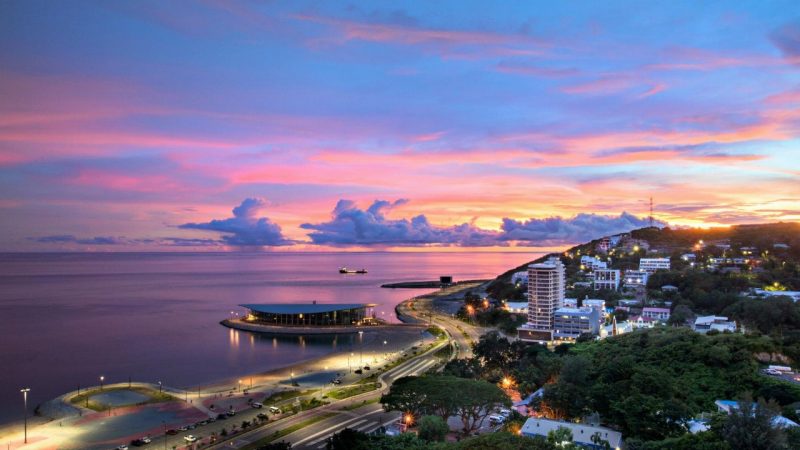- Mayur Resources (MRL) has been flying under the radar as it meticulously works to build up its string of valuable Papua New Guinea-based mining assets
- The company recently raised $5.5 million in November to keep advancing its flagship Central Cement and Lime (CCL) project, which is now fully permitted and shovel-ready
- At the same time, the company is spinning out some key copper-gold assets to list them on the TSX Venture Exchange
- According to Managing Director Paul Mulder, demand for quicklime is set to soar as the world increases nickel and copper use
- As such, the company is positioning itself to replace all quicklime imports in PNG with its domestic production and export high-quality lime from right next door to Australia from its PNG-based project — competing with Malaysian and Thailand imports
- Mayur says based on applying a conservative “developing nation” forward EBIT earning multiple, it is slated to become a billion-dollar business
- As it stands pre-production, Mayur shares are trading at 33 cents each in a $63 million market cap
Mayur Resources (MRL) has been flying under the radar as it meticulously works to build up its string of valuable Papua New Guinea-based mining assets.
In November, the company raised $5.5 million to keep advancing its flagship Central Cement and Lime (CCL) project in PNG — adding to the $53 million already invested into Mayur’s project development since 2013.
Upon raising the funds, Mayur told investors the CCL project is now fully permitted and shovel-ready, with proceeds from the capital raise going to examine disaggregation from the parent company, offtake deals, early quarry operation cash flow opportunities, and strategic partnerships to bring the project to production.
This supports Mayur as it disaggregates its key copper and gold assets onto the TSX Venture Exchange (TSXV), giving existing shareholders and new investors pure-play exposure.
The company has basically de-risked all of its projects through the exploration and feasibility phases and is now in the financing stage. As such, Mayur picked now as the right time to refine its portfolio while maintaining a core focus on industrial lime and cement, with its savvy management team spotting a future gap in the market and pre-emptively working to fill it.
Mayur Managing Director Paul Mulder said the company believes this is a billion-dollar strategy.
“We see this as a company that has the opportunity to be valued at well over a billion dollars in the future,” he told The Market Herald.
“I say that based upon a very conservative forward EBIT estimate of how much we think each project will generate,” he said.
But with nickel, rare earths, and lithium stealing the mining spotlight in 2020, where is the synergy in Mayur still being committed to its quicklime and cement project?
Sleeping mineral giants
Mayur management said as the world strives to decarbonise, copper and nickel are expected to experience a significant boost in demand.
The company explained that what most investors don’t realise is that with increased production of the likes of nickel, rare earths, lithium, copper, and gold, large quantities of quicklime need to be used to actually produce those products.
Thus, the company is positioning itself as a key bespoke high-grade quicklime producer to meet the current and upcoming boost to demand.
Further to this, however, is Australia’s shifting market dynamic from local production to securing quicklime supply from higher-quality imports.
Over recent years, higher-grade imports have been steadily displacing domestic supply, but these have to date usually come from Malaysia and Thailand as, historically, PNG has not been an option.
Mayur’s PNG high-grade lime asset, being right next door to Australia, can provide the same quality product at a cheaper price for both PNG and Australia compared to other international importers. Moreover, because it is much closer to home, Mayur’s asset can majorly reduce supply chain risk.
“We have an ideal opportunity to disrupt and take that market share away and ensure that we solidify that for our own projects,” Paul Mulder said.
“We feel that we’re ideally positioned to be the closest supplier and really give the market an alternative higher quality, lower-priced product,” he said.
“Do they want to keep buying from somewhere that’s further away? Do they want to keep paying a higher price? We don’t think so.”
Disaggregation … Who controls it?
The company said gold and copper remain very attractive assets to investors, with a significant oversubscription achieved in Mayur’s recent capital raise.
As such, Mayur is still keeping a close hold on its spun-out gold assets, holding around 45 per cent of the listed Canadian vehicle and having strategically placed focused and experienced management into the vehicle.
Mr Mulder explained that by shifting its copper-gold projects onto the TSXV, investors who want direct pure-play exposure in these lucrative metals can still gain significant exposure to MRL’s projects.
But at the same time, investors also have the opportunity to buy into the company’s other important assets, either via the parent company or should further spin-outs occur.
It’s a strategy developed by a management team with years of experience under its belt; both Paul and Mayur Executive Director Tim Crossley have more than two decades of experience in leadership roles for Gina Rinehart’s Hancock Prospecting and BHP (BHP).
Paul Mulder and Tim Crossley are both credited as having led two different $10-billion mine port and rail developments in Australia in the coal and iron ore sectors.
Moreover, the astute Mayur management team is happy to put its money where its mouth is, with around 40 per cent of the company owned by directors.
Shares in Mayur are trading at 33 cents each in a $64 million market cap.

